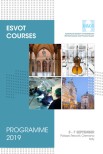ackground: Canine osteoarthritis (OA) is a progressive degenerative joint disease causing pain and mobility impairment. While the disease is incurable, multimodal management including regenerative therapies like platelet-rich plasma (PRP) can improve outcomes. However, protocol standardization remains a challenge.
Methods: We conducted a PRISMA (ie, Preferred Reporting Items for Systematic Reviews and Meta-analyses)-compliant systematic review of peer-reviewed studies evaluating intra-articular PRP for canine OA. Included studies reported functional or pain outcomes. The Cochrane robvis tool was used to assess risk of bias.
Results: A total of 18 studies comprising 379 dogs were included. Hips were most frequently treated (10 of 18 studies). Most protocols used single injections (13 of 18 studies), with substantial reporting gaps: 8 of 18 studies lacked platelet concentration data, 6 of 18 omitted activation methods, and only 7 of 18 provided sufficient detail for PRP classification (leukocyte-poor platelet-rich plasma or leukocyte-rich platelet-rich plasma). Objective gait analysis appeared in 7 of 18 studies. All studies reported significant pain/function improvement, though 8 articles showed high risk of bias due to inadequate randomization or blinding. Adverse events were reported in 6 publications as mild and transient local pain or lameness.
Clinical relevance: PRP demonstrates potential for canine OA management, but protocol heterogeneity and methodological limitations preclude definitive efficacy conclusions. While observational data indicated potentially enhanced effects when PRP is combined with adjunctive treatments like physical therapy or orthobiologics, these findings required validation through rigorously controlled, multi-institutional trials employing standardized protocols and objective outcome measures to successfully claim improved efficacy. Future research should prioritize comprehensive reporting of PRP preparation methods and incorporate objective outcome measures.









